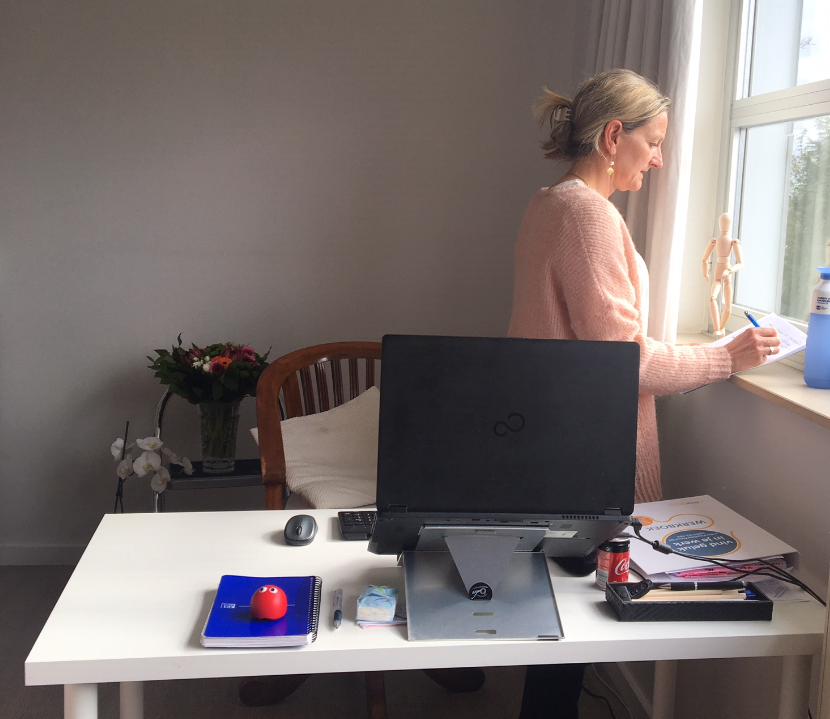Now that most of us are currently forced to work from home, it’s important to keep a couple of pointers in mind when arranging your workspace – no matter how temporary. If not, you may start to develop neck and back complaints that could have easily been avoided with a couple of adjustments, says ergonomist Veerle Hermans.
Veerle Hermans is a professor in ergonomics at the faculty of Psychology and Educational Sciences. She has more than 25 years of experience in analysing physical and mental strains at work, and in advising evidence-based solutions. Below are five of her tips to ensure that working from home doesn’t become a strain on your body.
Veerle Hermans’ tips
1. Pick a good workspace
Don’t position your table in front of a window or against a wall. Your eyes need to be able to look at something more distant than your computer screen every now and then. Incoming light, then again, can cause eye fatigue. The ideal solution is to position your table so it’s perpendicular to the window, and so that light enters the room from the side of your body.
2. Watch your posture
A good desk posture has your hips slightly higher than your knees and your thighs slightly inclined downwards. This means that most kitchen and living room chairs are too low, so sit on a pillow or try to find a higher chair. Also put an extra pillow or rolled-up towel behind your back if you’re working from a kitchen or living room chair. It’s also well worth investing in a desk chair if you anticipate working from home a lot.
3. Adjust the height of your table
The height of your table is just right when your elbows make a 90-degree angle and you are able to keep your underarms horizontal. This means that most dining tables are too high to be ergonomic friendly. So, again, try to find the highest chair you have or use a pillow. Use sturdy boards or wooden blocks to raise your table if it’s too low.
4. Make sure the top of your screen is at eye level
Place a book or two under your monitor if necessary to improve your neck posture. But don’t position the monitor too far away either. Otherwise, you’ll have to lean forward to be able to properly read what’s on your screen. Use a separate keyboard and mouse if you’re using a laptop, and raise your laptop screen by placing books or a laptop stand underneath.
5. Regularly get up and move around
Be sure to get out of your chair every 45 minutes. But also don’t stand still in one place for too long as this will result in back muscle fatigue and varicose veins. So try to alternate between sitting, standing and moving around.
Don’t stand still in one place for too long: try to alternate between sitting, standing and moving around.
How well have you heeded your own advice the past few weeks?
“Very well. I have an old, antique desk chair but it’s height adjustable. I use a sitting pillow to facilitate dynamic sitting and I have an extra pillow behind by back to compensate for the hard back. I also regularly stand up at my windowsill and look at my garden, so I can let my thoughts wander a little and so my eyes can focus on something more distant in the process.”
